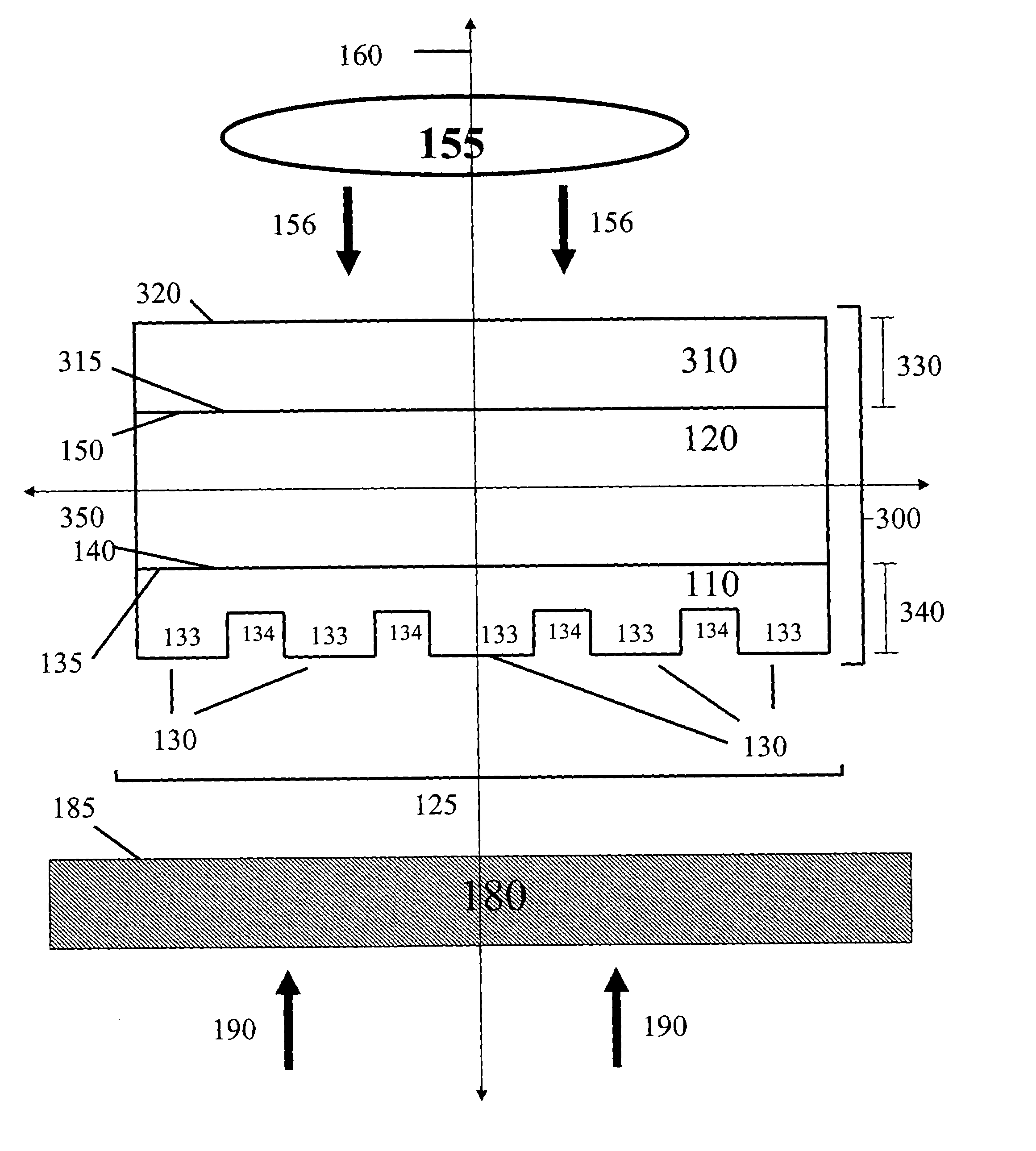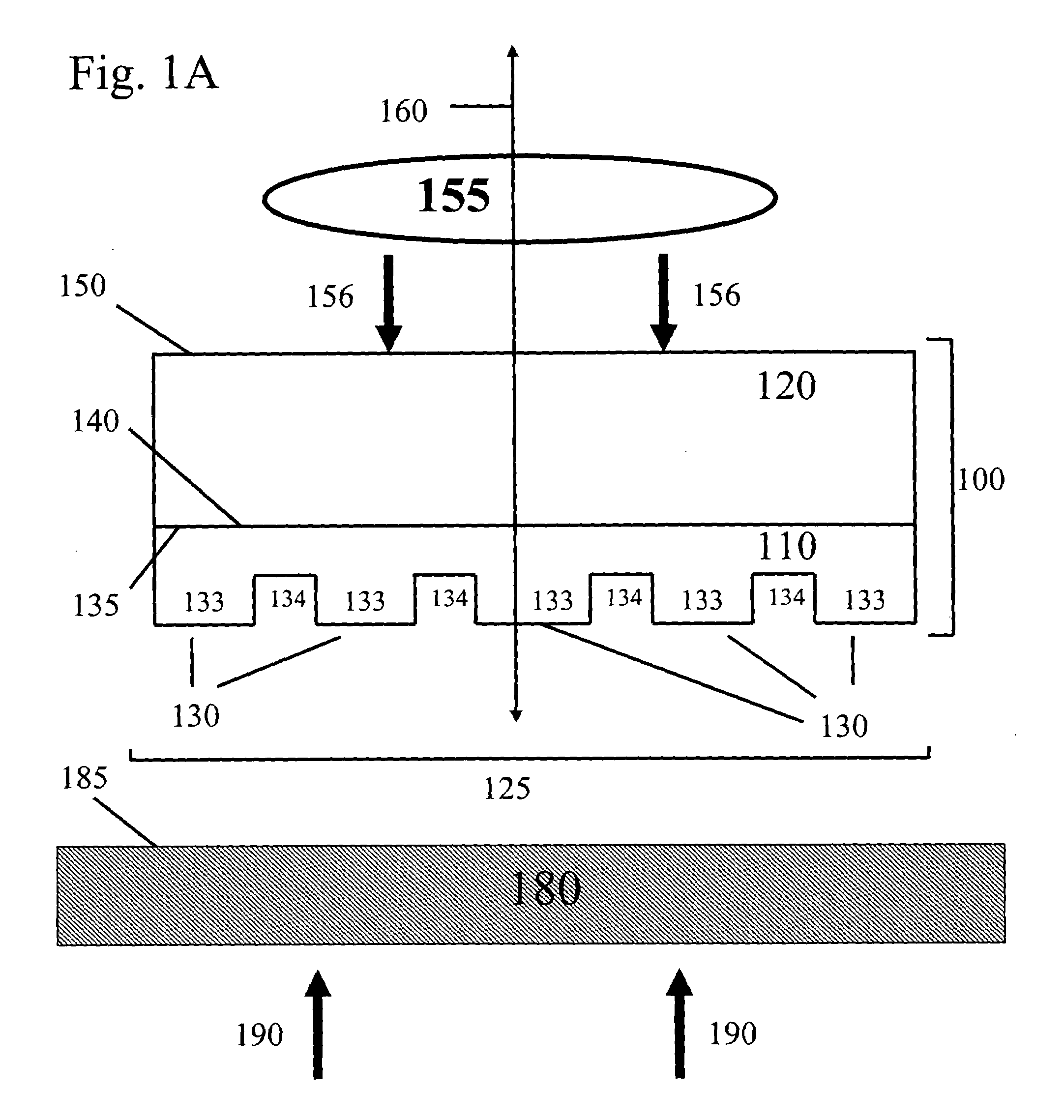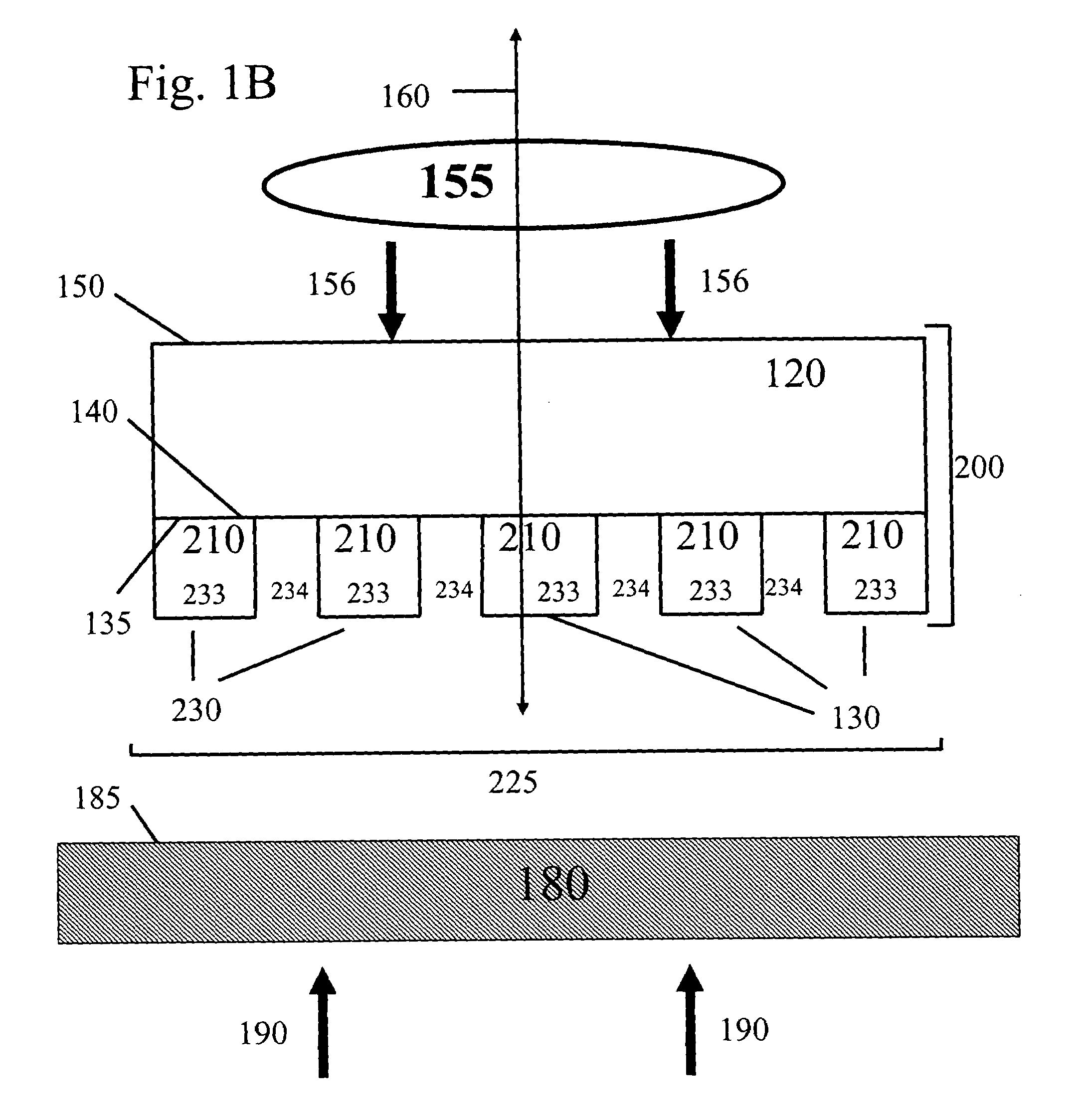Composite patterning devices for soft lithography
a technology of soft lithography and composite patterning, which is applied in the direction of photomechanical treatment originals, instruments, photomechanical equipment, etc., can solve the problems of limiting the application of nanolithographic methods to a very narrow range of specialized materials, high volume processing of nanomaterials, and high cost of nanolithographic methods. achieve high resolution, good placement accuracy, and high fidelity over large substrate surface areas
- Summary
- Abstract
- Description
- Claims
- Application Information
AI Technical Summary
Benefits of technology
Problems solved by technology
Method used
Image
Examples
example 1
Composite Stamps for Nanotransfer Printing
[0109]The ability of the patterning devices of the present invention to provide composite stamps for nanotransfer printing applications was verified by experimental studies. Specifically, it is a goal of the present invention to provide composite stamps capable of patterning large areas of a substrate surface with structures having selected lengths on the order of microns and 10's of nanometers. Further, it is a goal of the present invention to provide composite stamps for contact printing high resolution patterns exhibiting good fidelity and placement accuracy.
[0110]To achieve the aforementioned goals, composite stamps were fabricated using the methods of the present invention and used to generate patterns comprising monolayers of gold on substrates via nanotransfer printing (nTP). Specifically, large area composites stamps were generated and tested, comprising a thin (5–10 micron) PDMS layer in contact with a 25 micron thick polyimide (Kap...
example 2
Computer modeling of the Thermal Characteristics and Mechanical Properties of Composite Patterning Devices
[0118]The susceptibility of multilayer patterning devices of the present invention to distortions induced by polymerization during fabrication and mechanical stresses was evaluated by computation simulations. Specifically, the extent of deformation induced by polymerization during fabrication and the weight driven deformation of recessed regions was calculated for a four layer composite patterning device. These studies verified that composite patterning devices of the present invention exhibit enhanced stability with respect to polymerization induced shrinkage and weight driven sagging.
[0119]The extent of polymerization induced distortion was calculated and compared for two different composite pattern designs. First, a four layer composite patterning device 600, shown schematically in FIG. 10, was evaluated comprising a first 5 micron thick PDMS polymer layer 610, a second 25 mi...
example 3
Fiber Reinforced Composite Patterning Devices
[0123]The present invention includes composite pattering devices comprising one or more composite polymer layers, including polymer layers having fiber materials providing beneficial mechanical, structural and / or thermal properties. Composite patterning devices of this aspect of the present invention include designs wherein fibers are integrated into and / or between polymer layers in geometries selected to provide a net flexural rigidity that minimizes distortion of the relief features of a relief pattern and which provide patterning devices capable of generating patterns exhibiting good fidelity and placement accuracy on substrate surfaces. Furthermore, composite patterning devices of this aspect of the present invention include designs wherein fibers are integrated into and / or between polymer layers in geometries selected to minimize expansion or contraction of polymer layers due changes in temperature and / or to facilitate physical manip...
PUM
| Property | Measurement | Unit |
|---|---|---|
| thickness | aaaaa | aaaaa |
| thickness | aaaaa | aaaaa |
| thickness | aaaaa | aaaaa |
Abstract
Description
Claims
Application Information
 Login to View More
Login to View More - R&D
- Intellectual Property
- Life Sciences
- Materials
- Tech Scout
- Unparalleled Data Quality
- Higher Quality Content
- 60% Fewer Hallucinations
Browse by: Latest US Patents, China's latest patents, Technical Efficacy Thesaurus, Application Domain, Technology Topic, Popular Technical Reports.
© 2025 PatSnap. All rights reserved.Legal|Privacy policy|Modern Slavery Act Transparency Statement|Sitemap|About US| Contact US: help@patsnap.com



